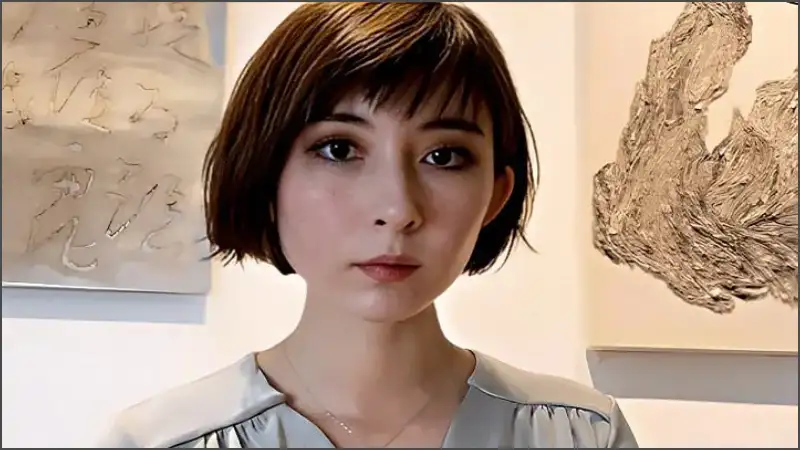Ever felt like the fashion world on social media is more about creating the perfect image than reality? That’s where Fauxmoi comes in, a term that’s shaping how we view style, identity, and online personas in today’s digital age. Fauxmoi reflects the way people curate and project their most idealized selves on social platforms. Did you know that in 2023, more than 70% of people aged 18-34 admitted they’ve felt pressured to appear more stylish or attractive on social media, according to a Deloitte survey? Social platforms like Instagram and TikTok are major drivers of this trend, where millions of users craft images of themselves to fit into the digital world.
In this article, we’ll dive into the meaning of Fauxmoi, how it became a social media phenomenon, and its impact on the fashion industry and personal identity. We’ll also discuss the psychological effects of presenting a curated version of oneself online and explore how to engage with Fauxmoi healthily.
What Does Fauxmoi Mean?
Fauxmoi is a combination of the French words “faux” (which means fake or imitation) and “moi” (which means me). Together, they represent the concept of creating a false or idealized version of oneself online. This is most often seen in the worlds of fashion, beauty, and lifestyle on platforms like Instagram, TikTok, and Pinterest, where users carefully curate every aspect of their appearance and surroundings to present the best possible version of their lives.
Fauxmoi is not just about showcasing designer clothing or luxury items. It’s about projecting a life that may not be entirely authentic. Whether that means using filters, altering physical appearances, or buying outfits just for the sake of a photo. The key to Fauxmoi is curation: choosing what aspects of yourself and your life you want the world to see, and leaving the rest out.
The Rise of Fauxmoi in Social Media
The term Fauxmoi has become increasingly popular as social media platforms have grown. Today, there are more than 4.9 billion active social media users worldwide, according to Statista. This surge in social media use has led to more people feeling pressure to present a flawless version of themselves online. Fashion influencers, models, and celebrities often set these trends, but everyday users have also adopted the practice of curating their online personas.
Platforms like Instagram and TikTok encourage users to show off their best selves, and the rise of influencer culture has created a space where Fauxmoi personas can thrive. Fashion trends are often driven by influencers who rent expensive clothes, borrow luxury accessories, or even wear knock-offs, all to maintain their image of success and glamour.
Fashion and Fauxmoi: Crafting a Stylish Persona
Fauxmoi is particularly prominent in the fashion world. Many social media users post photos of themselves wearing designer clothes or posing in glamorous settings, but this is often more for show than a reflection of reality. There are entire businesses dedicated to renting designer outfits to people who want to appear stylish in their social media photos. Fauxmoi has blurred the lines between authentic fashion and a curated image.
It’s not uncommon for influencers to wear items they can’t afford or don’t even own in real life. They’ll often tag the brands, and followers will assume that the influencer’s lifestyle is as luxurious as the brands they promote. This feeds into the growing culture of aspirational living, where people chase after a certain image rather than focusing on authenticity.
The Social Media Trap: Is Everyone Faking It?
If you’ve ever felt envious while scrolling through perfectly curated photos on Instagram, you’re not alone. Studies show that the highlight reel effect of social media can make users feel inadequate or dissatisfied with their own lives. In fact, a 2017 study by the Royal Society for Public Health found that Instagram was the most detrimental social media platform for mental health, particularly in relation to anxiety, depression, and body image.
This phenomenon is the result of comparing yourself to what you see online, without realizing that many of those images have been curated and filtered. Fauxmoi personas thrive on these platforms because they allow users to selectively showcase their best moments, leaving out the mundane or imperfect aspects of their lives.
The Impact of Fauxmoi on Society
Fauxmoi doesn’t just impact individuals. It’s shaping consumer behavior, psychological health, and even cultural norms. Here are a few ways Fauxmoi is leaving its mark:
- Psychological Impact on Individuals
The curated, idealized lives portrayed through Fauxmoi create a comparison trap. Users may feel pressured to constantly keep up with trends, whether it’s wearing the latest designer pieces or looking perfect in every photo. This leads to increased social anxiety and feelings of inadequacy. A study from the American Psychological Association (APA) reveals that many social media users experience a fear of missing out (FOMO) as they scroll through these curated feeds. - Consumerism
Fauxmoi is driving consumerism in a significant way. According to the 2019 Deloitte study, 70% of millennials say that social media influences their buying decisions. Brands leverage influencers to sell the dream of an idealized life, pushing users to spend more on clothes, accessories, and even experiences they think will help them fit into this polished world. - Unrealistic Standards of Beauty and Success
The expectations set by Fauxmoi personas are often unattainable. Filters, Photoshop, and other editing tools create perfect images that don’t reflect reality. This can lead to negative body image and dissatisfaction with personal appearance, as users compare themselves to standards that aren’t even real.
The Authenticity Debate: Where Do We Draw the Line?
Fauxmoi raises an important question: how much of what we post online should be authentic? Some believe that it’s perfectly fine to curate your social media feed, especially since platforms are designed to showcase highlight reels. After all, who wants to see the everyday messiness of life?
However, others argue that authenticity is more valuable, especially as social media continues to influence mental health. Some influencers are starting to push back against the curated lifestyle by posting more candid photos or sharing moments that feel real and raw. Platforms like BeReal have emerged to encourage users to post unfiltered moments, showing the reality behind the camera.
How to Embrace Fauxmoi Positively
While Fauxmoi can have negative effects, it’s possible to engage with it in a healthy and balanced way. Here are a few tips:
- Curate with Confidence: If you want to showcase a certain style or look online, go for it! Just remember that you don’t need to be perfect all the time.
- Use Fauxmoi as Inspiration, Not Comparison: When you see influencers or friends showing off their best moments, use it as inspiration for your own style or interests, rather than comparing yourself negatively.
- Post Authentic Content When You Can: It’s okay to let down your guard sometimes and post more real, unfiltered content. This can help foster a more genuine connection with your audience and remind others that life isn’t always perfect.
Conclusion: Navigating Fauxmoi in the Age of Social Media
Fauxmoi reflects the reality of living in a digitally curated world. While it can offer inspiration and allow users to experiment with personal identity. It also has its downsides, particularly when it comes to mental health and unrealistic expectations. The key is finding balance. Embrace the fun and creativity that comes with curating your online persona, but don’t forget that real life, with all its imperfections, is just as valuable.
If you have any questions, Please visit our Contact Us page for contact.






Leave a Reply